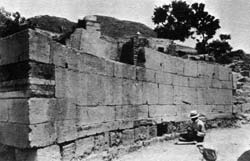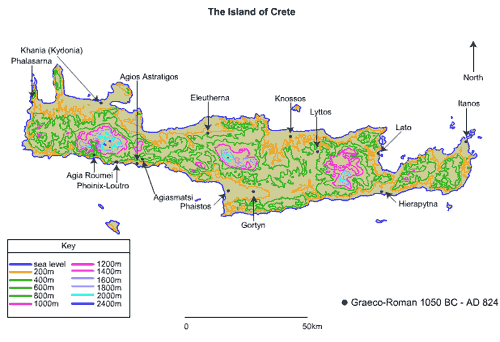Introduction
The site of Gortyn has been identified since at least the Venetian period, when Onorio Belli recorded one of the theatres there. Indeed, as the site was occupied when the Venetians conquered the island, it is likely that knowledge of its past was never wholly lost. As we noted earlier in Unit 2 Session 1 Lessons 2 and 3, eighteenth and nineteenth century travellers (Pococke, Spratt and others) visited Gortyn, admired the ruins, puzzled over the so-called Labyrinth nearby, and made drawings of some of what they saw.
 Federico Halbherr checking the transcription of the Gortyn law code (1984). © De Luca |
Modern study started there in 1884, when the Italian Federico Halbherr started to find blocks on which the ancient law code of Gortyn was inscribed (for more information on the ancient law code, revisit Unit 1 Session 4 Lesson 4).
Italian work at Gortyn, now organised through the Italian School of Archaeology at Athens, has continued ever since. (For the organisation of modern archaeological work in Greece, see Unit 2 Session 4.) We now have a good understanding of three main phases of Gortyn's past: Archaic-Hellenistic, Roman, and Late Roman. The following account will mark with an asterisk (*) those buildings that will feature in the synoptic chart in Session 4 of this unit.
In this session we give an overview of the site of Gortyn through the Pre-Roman to Late Roman periods. We discuss why it was that Gortyn became a Roman settlement, and what was the significance of its position in ancient Roman society, as well as looking at various artefacts in detail as found at the site.
 Gortyn lies in south-central Crete, on the edge of the fertile Mesara valley, the largest single plain on Crete. © TALL |